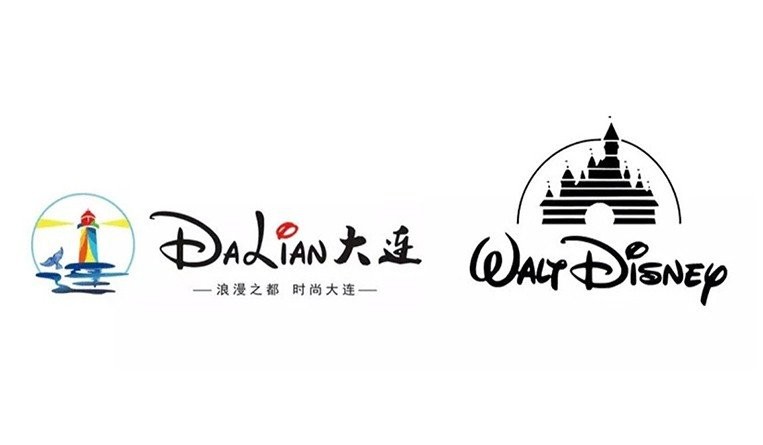Last year, the Dalian Culture and Tourism Bureau mounted a logo design competition to promote tourism in the city of Dalian in northern China.
On December 11, 2019, the winner was announced. The winning design, by Su Zhanying of the Dalian Yinji Tourism Culture Development Company, shows a colorful lighthouse inside a partial circle with the word Dalian beside it.
However, Chinese netizens spotted something almost immediately: a similarity with the trademarked corporate logo of Disney, which opened a US$5.5 billion theme park in Shanghai in 2016. The lettering in the Disney logo was based on the signature of Walt Disney himself. Among others, similarities were seen in how the letters “D,” “i” and “A” were written.
According to Jinshan Liu, senior partner at Boss & Young in Beijing, the Dalian City logo and Walt Disney do not constitute identical or similar marks with respect to same or similar goods and services. Therefore, normal confusion of the two marks is not an issue.
“Trademarks and copyrights are protected under different laws in China and most other jurisdictions. However, in this case and many others where logo or design trademarks are related to or derived from a third party’s copyrights where the copyrights are also works of art, copyright can be used in challenging the trademarks,” he says.
Regarding the question of whether the trademark does infringe copyright, the critical issue of the so-called copyright is an eventual identification of copyright, according to Liu. In this particular case, the question is whether the fonts in the Walt Disney logo are copyrighted.
“There are actually five letters in the Dalian City logo. If only one or two letters are designed identical with or similar to those fonts in the Walt Disney logo to the extent that no confusion will be caused, it could be understood that the author ‘learnt’ from the Walt Disney logo,” he explains. “However, in this case, all the letters in the Dalian City logo look almost the same with the respective fonts in the Walt Disney logo. The only exception is the letter ‘L’ in the author’s work [and whether it] looks like the reversed letter ‘T’ in the Walt Disney logo or not.”
Thus, for Liu, it is easy to conclude that the author copied the fonts of the Walt Disney logo.










